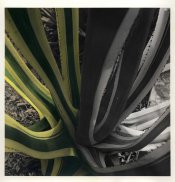villagephotog
Subscriber
It's mountain laurel season in New York, and I'm looking for tips and hints from those with experience shooting white flowers against green leaves on B&W. My goal is to keep the green from rendering too light a shade of gray, so I can retain nice separation between the flowers and surrounding greenery.
What filters, if any, could help here? I know the color theory, which would suggest that a magenta filter would cut the green transmission and render the leaves darker, but I haven't seen examples of anyone doing that. Anyone ever tried it? How about red or orange filters for this?
Second thing I wondered is if there is a film known for lower sensitivity in the green spectrum. Anything like that? Absent any better advice, I'll probably shoot with Ilford HP5+.
Any hints from those with more experience with this kind of subject would be appreciated!
[Here's a close-ish example of the flowers and leaves I'm talking about:]

What filters, if any, could help here? I know the color theory, which would suggest that a magenta filter would cut the green transmission and render the leaves darker, but I haven't seen examples of anyone doing that. Anyone ever tried it? How about red or orange filters for this?
Second thing I wondered is if there is a film known for lower sensitivity in the green spectrum. Anything like that? Absent any better advice, I'll probably shoot with Ilford HP5+.
Any hints from those with more experience with this kind of subject would be appreciated!
[Here's a close-ish example of the flowers and leaves I'm talking about:]










 .
.